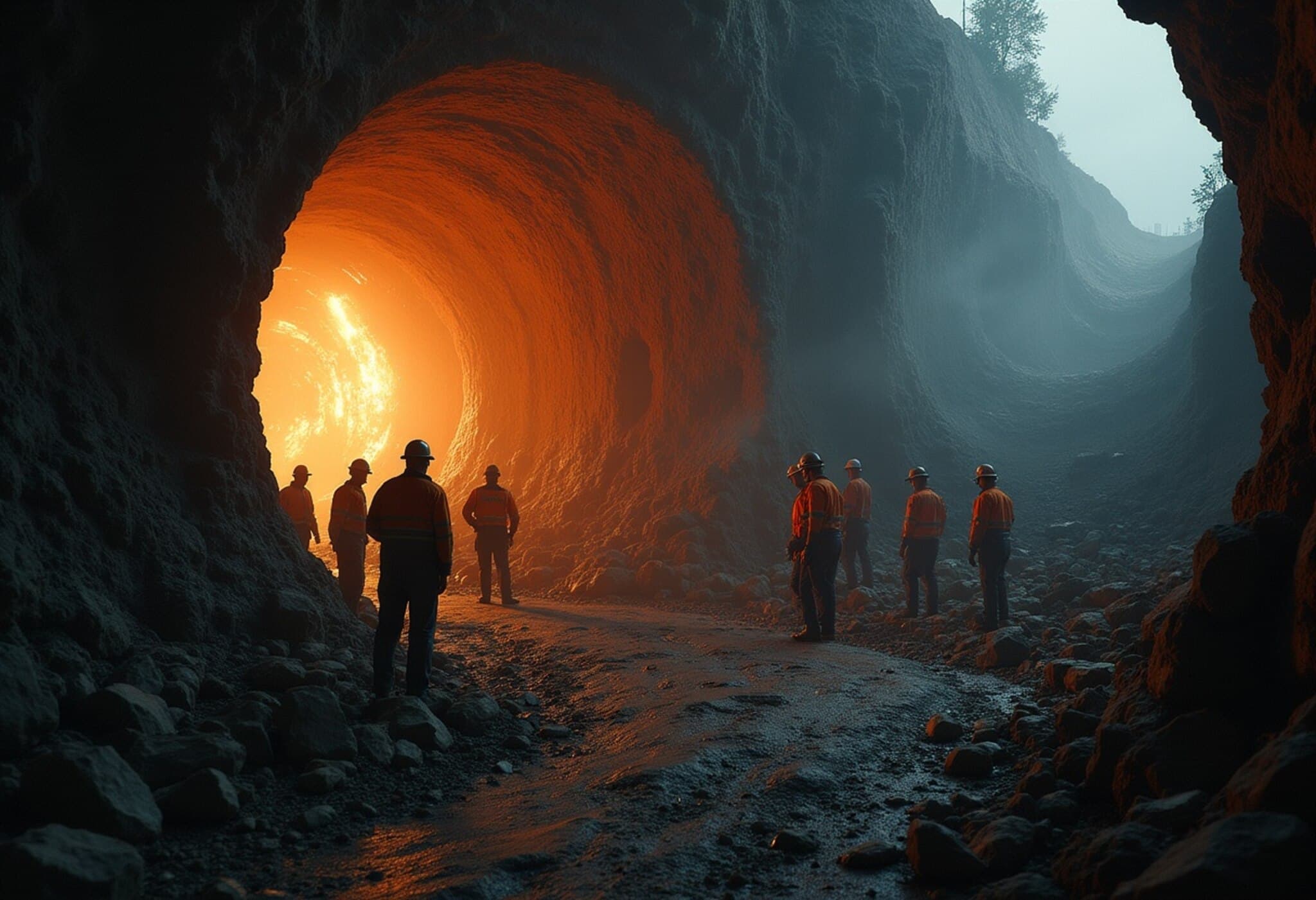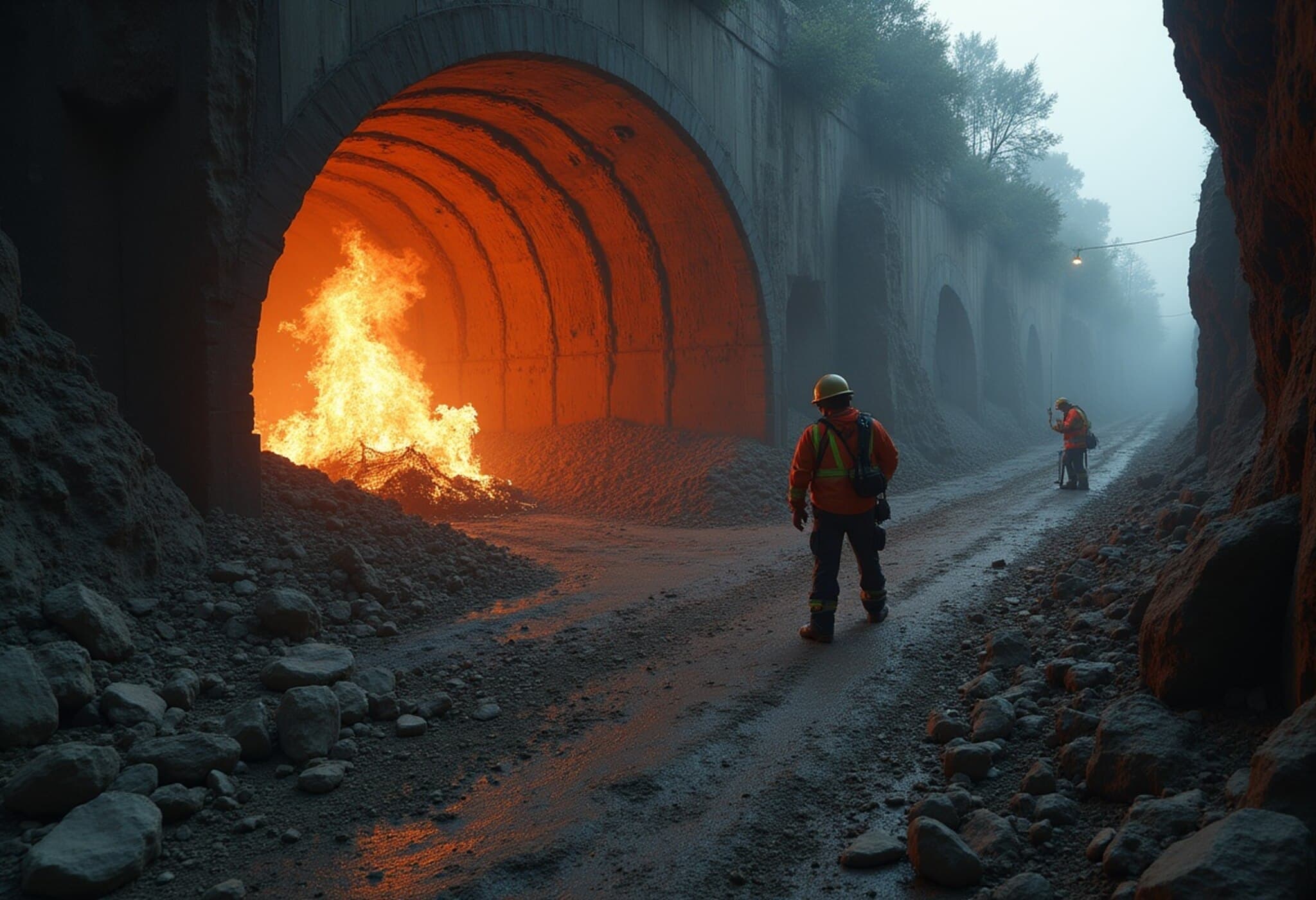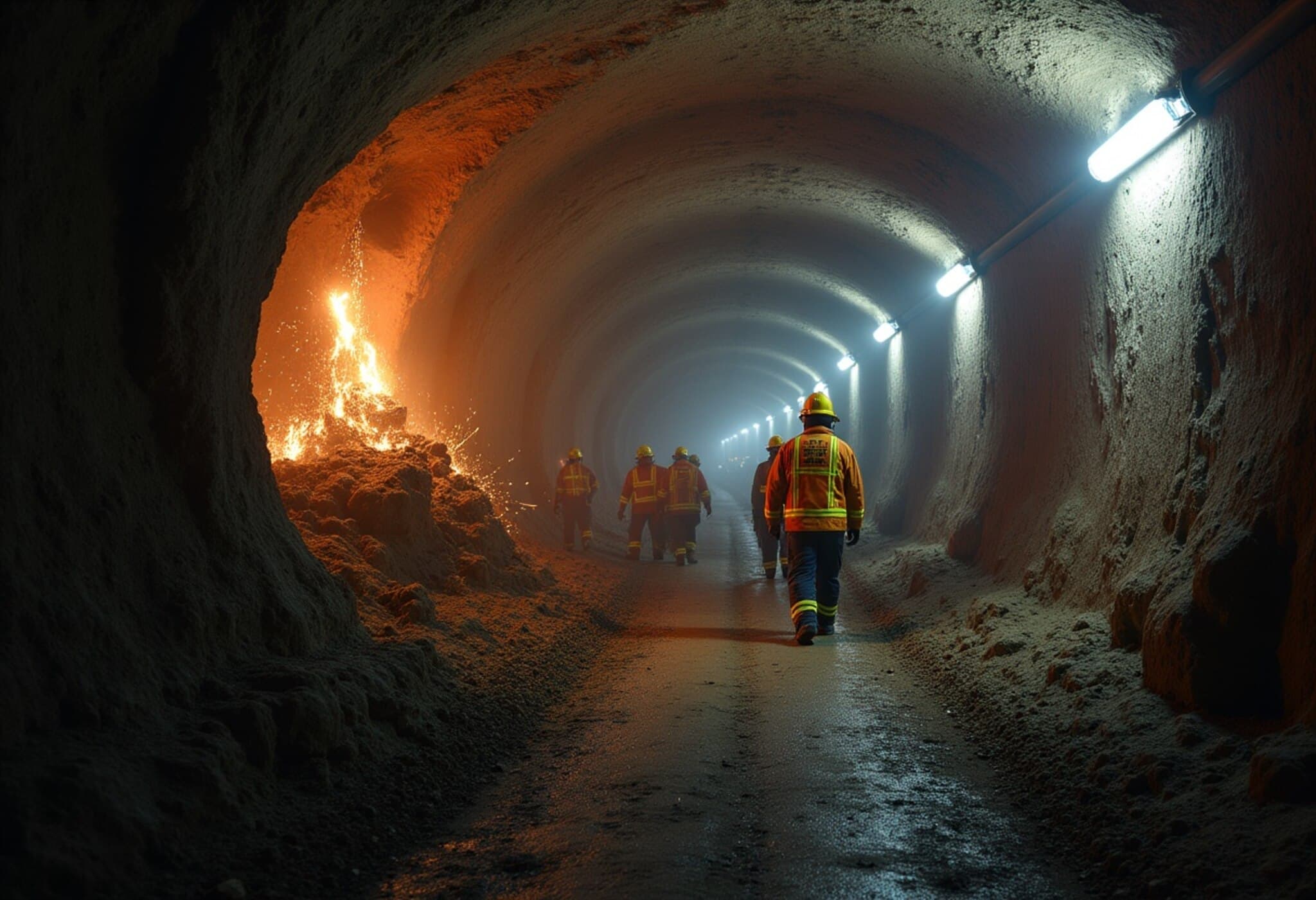Industrial Tunnel Collapse in Los Angeles: 15 Workers Trapped, Emergency Response Ongoing
On Wednesday evening, an industrial tunnel collapsed in the Wilmington neighborhood of Los Angeles, leaving at least 15 workers trapped underground. The incident occurred around 8 p.m. near the 1700 block of North Figueroa Street, sparking a swift and large-scale emergency response from the Los Angeles Fire Department (LAFD).
Immediate Response and Rescue Operation
According to the LAFD, the collapse happened approximately six miles from the tunnel’s only access point, posing significant challenges for rescue teams. Over 100 fire personnel—including members of the specialized Urban Search and Rescue unit—were deployed to the site to commence extraction and stabilization efforts.
Local broadcasters captured footage of workers being carefully evacuated from the tunnel using a crane-lifted cage. Despite the severity of the collapse, no injuries have been officially confirmed so far, though rescue operations are still underway and authorities remain cautiously optimistic.
Contextualizing the Incident: Workplace Safety in Industrial Settings
This dramatic event highlights the ever-present risks faced by workers in industrial and construction environments, particularly in complex underground projects. Tunnels, by their nature, can be dangerous due to structural instability, limited access points, and the potential for cave-ins—risks that require rigorous safety protocols.
From an American policy perspective, incidents like this often reignite debates around workplace safety regulations enforced by agencies such as the Occupational Safety and Health Administration (OSHA). The tunnel collapse raises pertinent questions about ongoing safety audits, engineering oversight, and emergency preparedness on industrial sites nationwide.
Questions Raised and Underreported Angles
- Structural Integrity and Risk Management: What engineering safeguards were in place for this tunnel, and have there been recent inspections addressing potential vulnerabilities?
- Worker Training and Emergency Protocols: Were the workers adequately trained for entrapment scenarios, and how did communication unfold during the rescue?
- Long-term Impact on the Wilmington Community: How might such incidents affect the local workforce and industrial operations in this economically significant Los Angeles neighborhood?
Expert Insight
Industry experts emphasize that while advances in tunnel engineering and monitoring technologies have improved safety over past decades, the human element remains critical. Continuous training, adherence to strict safety standards, and rapid emergency responsiveness are factors that ultimately save lives when seconds count.
Additionally, the scale of this rescue operation reflects the LAFD’s preparedness for complex urban disasters, yet it also underscores the need for persistent investment in resources and training tailored specifically for subterranean emergencies.
What Happens Next?
Rescuers are expected to continue their painstaking operation as night turns into day, with hopes of safely retrieving all personnel trapped beneath. Meanwhile, investigations into the cause of the collapse will seek to prevent similar tragedies in the future.
Editor’s Note
This tunnel collapse in Los Angeles serves as a stark reminder of industrial workers’ vulnerability and the critical importance of stringent safety protocols. It compels policymakers, companies, and communities to reflect on how workplace hazards are managed—especially in environments where access is limited and any failure can have catastrophic consequences.
For readers, staying informed on industrial safety and supporting ongoing reforms can contribute to safer working conditions nationwide. As more details emerge, this story will remain a focal point for discussions about labor rights, engineering standards, and emergency preparedness.



















